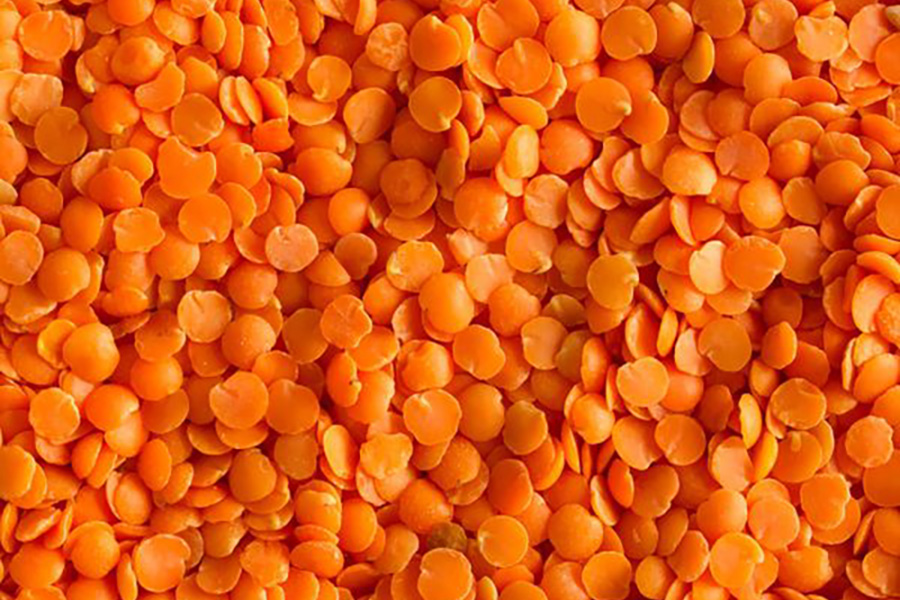The word adauam (𐤀𐤃𐤅𐤌) means “red lentil” meaning a plant of the legume family, having flattened, biconvex seeds used as food.
Most popularly it is known as “Edom” the elder 𐤁𐤍 (ban) of 𐤉𐤑𐤇𐤒 (Yatsakhaq) and twin 𐤀𐤇 (akh) of 𐤉𐤔𐤓𐤀𐤋 (Yasharaal). He was originally called 𐤏𐤔𐤅 (Āshau) at birth but was renamed to 𐤀𐤃𐤅𐤌 (Adauam). He is the progenitor of the 𐤀𐤃𐤅𐤌𐤉𐤌 (Adauamayam) and through the descendants of his marriage to his 𐤇𐤕𐤉𐤌 (Khayatayam) 𐤀𐤔𐤄𐤉𐤌 (ashahayam), he is the progenitor of the Romans. Of the twins, 𐤀𐤃𐤅𐤌 (Adauam) was the 𐤁𐤊𐤅𐤓 (bakauar) with 𐤉𐤏𐤒𐤁 (Yaaqab) following, holding his heel. 𐤉𐤑𐤇𐤒 (Yatsakhaq) was sixty years old when the boys were born.
The Paleo-Hebrew language or the original language of the Ābarayam is one spoken with an emphasis on the rauakh (breath, wind, spirit). With the language of the Ābarayam, each letter has a meaning and a number associated with it that adds meaning to each word they’re used with. Below you will be able to learn more about the letter in Ancient Hebrew, Yiddish Hebrew, Greek, and much more.
Letter Meanings
| Letter | Meaning |
|---|---|
| 𐤀 (a) – ah | Ox, strength, leader |
| 𐤃 (d) – da | Tent door, pathway |
| 𐤅 (u) – ua [ýa] | and, nail, tent peg, hook, to secure, connect, Messiah |
| 𐤌 (m) – ma | water, chaos, mighty, liquid, massive, sea, blemish |
| Ābarayat Number | 713 = 1 (a) + 4 (d) + 400 (u) + 6 (u) + 40 (m) |
| Hebrew Gematria | 237 = 1 (a) + 4 (d) + 1 (a) + 200 (u) + 1 (a) + 30 (m) |
| English Gematria | 246 = 6 (a) + 4 (d) + 6 (a) + 126 (u) + 6 (a) + 78 (m) |
| Simple Gematria | 41 = 1 (a) + 4 (d) + 1 (a) + 21 (u) + 1 (a) + 13 (m) |
Based on the meaning of the letters the word could be defined as:
- “Leader of a pathway of to secure chaos”
- “Leader of a pathway to connect multitude”
- “Strength move to connect chaos”
- “Strength of pathway to connect sea”
Definitions for 𐤀𐤃𐤅𐤌 / adauam
| Language | Word | Transliteration | Pronunciation | Definition |
|---|---|---|---|---|
| Ābarayat | 𐤀𐤃𐤅𐤌 | adauam | aw-doom | the name of a condiment, stuff, red lentils. |
| English | Edom | Edom | ee-duhm | Greek Idumaea, Idumea. |
| Hebrew | אֱדוֹם | edom | ed-ome’ | the name of a condiment, stuff. |
| Arabic | انسان | ainsan | an-san | man, person, human being, creature |
| Greek | Ἰδουμαία | Idoumaia | id-oo-mah’-yah | Idumea, Edom, a district of Arabia, immediately south of Judea. |
Genealogy
| Generation | Direct Lineage | Sibling Lineage |
|---|---|---|
| 1st Generation | 𐤍𐤅𐤇 (Nauakh) | |
| 2nd Generation | 𐤔𐤌 (Sham) | 𐤉𐤐𐤕 (Yaphat) 𐤇𐤌 (Kham) |
| 3rd Generation | 𐤀𐤓𐤐𐤊𐤔𐤃 (Araphakashad) | 𐤏𐤉𐤋𐤌 (Āyalam) 𐤀𐤔𐤇𐤅𐤓 (Ashakhauar) 𐤋𐤅𐤃 (Lauad) 𐤀𐤓𐤌 (Aram) |
| 4rth Generation | 𐤔𐤋𐤇 (Shalakh) | |
| 5th Generation | 𐤏𐤁𐤓 (Ābar) | |
| 6th Generation | 𐤐𐤋𐤂 (Phalag) | 𐤉𐤒𐤈𐤍 (Yaqathan) |
| 7th Generation | 𐤓𐤏𐤅 (Raāu) | |
| 8th Generation | 𐤔𐤓𐤅𐤂 (Sharauag) | |
| 9th Generation | 𐤍𐤇𐤅𐤓 (Nakhauar) | |
| 10th Generation | 𐤕𐤓𐤇 (Tarakh) | |
| 11th Generation | 𐤀𐤁𐤓𐤌 (Abaram) / 𐤀𐤁𐤓𐤄𐤌 (Abaraham) | 𐤍𐤇𐤅𐤓 (Nakhauar) 𐤄𐤓𐤍 (Haran) 𐤔𐤓𐤉 (Sharay) / 𐤔𐤓𐤄 (Sharah) |
| 12th Generation | 𐤉𐤑𐤇𐤒 (Yatsakhaq) | 𐤉𐤔𐤌𐤏𐤀𐤋 (Yashamaāal) 𐤆𐤌𐤓𐤍 (Zamaran) 𐤌𐤃𐤉𐤍 (Madayan) 𐤌𐤃𐤍 (Madan) 𐤉𐤒𐤔𐤍 (Yaqashan) 𐤉𐤔𐤁𐤒 (Yashabaq) 𐤔𐤅𐤇 (Shauakh) |
| 13th Generation | 𐤏𐤔𐤅 (Āshau) / 𐤀𐤃𐤅𐤌 (Adauam) / 𐤔𐤏𐤉𐤓 (Shaāyar) | 𐤉𐤔𐤓𐤀𐤋 (Yasharaal) / 𐤉𐤏𐤒𐤁 (Yaāqab) |
| 14th Generation | 𐤀𐤋𐤉𐤐𐤆 (Alayaphaz) 𐤓𐤏𐤅𐤀𐤋 (Raāuaal) 𐤉𐤏𐤅𐤔 (Yaāuash) 𐤉𐤏𐤋𐤌 (Yaālam) 𐤒𐤓𐤇 (Qarakh) |
Images for 𐤀𐤃𐤅𐤌 / adauam


Definitions for 𐤀𐤃𐤅𐤌𐤉 / adauamay
When adding the 𐤉 (yad) to the end of a word, it creates a possessive of the original word. It can either signify “my…” or identify a member of a nation. For example, 𐤏𐤁𐤓 (Ābar) is the progenitor, but 𐤏𐤁𐤓𐤉 (Ābaray) is the singular descendant of him also known as a Hebrew.
| Language | Word | Transliteration | Pronunciation | Definition |
|---|---|---|---|---|
| Ābarayat | 𐤀𐤃𐤅𐤌𐤉 | adauamay | aw-doo-mey | a descendant of Ashau or Adauam. |
| English | Edomite | Edomite | ee-duh-mahyt | a descendant of Esau or Edom. |
| Hebrew | אֱדוֹמִי | Adomi | ed-o-mee’ | a descendant of Edom. |
| Arabic | ادوميت | adwmit | aw-dawm-et | Edomite |
| Greek | Ἰδουμαία | Idoumaia | id-oo-mah’-yah | Idumea, Edom, a district of Arabia, immediately south of Judea. |
Images for 𐤀𐤃𐤅𐤌𐤉 / adauamay








The Nation
𐤀𐤃𐤅𐤌𐤉 (Adauamay) or Edomite is the name of the descendants of “Esau” who are the adversary of the 𐤉𐤔𐤓𐤀𐤋𐤉𐤌 (Yasharaalayam). They worshiped a deity known as 𐤒𐤅𐤎 (Qauas) or known as 𐤄𐤔𐤈𐤍 (Ha-Shathan) by the 𐤉𐤔𐤓𐤀𐤋𐤉𐤌 (Yasharaalayam), and was the enemy of 𐤉𐤄𐤉𐤄 (Yahayah).
Their name means to be “red” or “ruddy”. In some Arab cultures being “red” is in reference to those who are melanin deficient because in hotter climates their skin is a red color. They would expand their empire and conquer different nations. One nation they conquered was the Greeks and became the Romans. This would later lead to the Roman Catholic Church, Christianity, Islam, and Judaism.
Definitions for 𐤀𐤃𐤅𐤌𐤉𐤌 / adauamayam
When adding the 𐤌 (mayam) after the 𐤉 (yad) to the end of a word, it creates a plural of the original word. It can identify multiple members of a nation. For example, 𐤏𐤁𐤓 (Ābar) is the progenitor, but 𐤏𐤁𐤓𐤉𐤌 (Ābarayam) are the plural descendants of him also known as Hebrews.
| Language | Word | Transliteration | Pronunciation | Definition |
|---|---|---|---|---|
| Ābarayat | 𐤀𐤃𐤅𐤌𐤉𐤌 | adauamayam | aw-doom-yawm | descendants of Ashau or Adauam. |
| English | Edomites | Edomites | ee-duh-mahyts | descendants of Esau or Edom. |
| Hebrew | אֱדוֹמִים | Adummim | ad-oom-meem’ | a place between Jerusalem and Jericho |
| Arabic | أحمر | ahmar | ah-mar | red, tan, ruddy, scarlet |
| Greek | Ἰδουμαία | Idoumaia | id-oo-mah’-yah | Idumea, Edom, a district of Arabia, immediately south of Judea. |
Images for 𐤀𐤃𐤅𐤌𐤉𐤌 / adauamayam


Definitions for 𐤀𐤃𐤅𐤌𐤉𐤕 / adauamayat
When adding the 𐤕 (tau) after the 𐤉 (yad) to the end of a word, it creates a plural of the original word. It identifies the language or a sign of a nation’s existence. For example, 𐤏𐤁𐤓 (Ābar) is the progenitor, but 𐤏𐤁𐤓𐤉𐤕 (Ābarayat) is the language of him also known as Paleo-Hebrew language.
| Language | Word | Transliteration | Pronunciation | Definition |
|---|---|---|---|---|
| Ābarayat | 𐤀𐤃𐤅𐤌𐤉𐤕 | adauamayat | aw-doom-yawt | |
| English | ||||
| Hebrew | ||||
| Arabic | ||||
| Greek |
Alphabet
| Character | Name | Transliteration | Pronunciation |
|---|---|---|---|
| 𐤀 | alp (ox) | A a | ah |
| 𐤁 | bayt (house) | B b | ba |
| 𐤂 | gaml (throwstick) | G g | ga |
| 𐤃 | dag (fish) | D d | da |
| 𐤄 | hillul (praise) | H h | ha |
| 𐤅 | uph (fowl) | O o | ua ( oo ) |
| 𐤆 | zayn (sword) | Z z | za |
| 𐤇 | hasr (courtyard) hayt (thread) | Ch ch | cha |
| 𐤈 | tab (good) | Th th | tha |
| 𐤉 | yad (hand) | Y y | ya |
| 𐤊 | kap (palm) | K k | ka |
| 𐤋 | lamd (goad) | L l | la |
| 𐤌 | maym (water) | M m | ma |
| 𐤍 | nahas (snake) | N n | na |
| 𐤎 | samk (peg) | S s | sa |
| 𐤏 | ayn (eye) | Ā ā | aa |
| 𐤐 | pit (corner) | P p | pa ( fa ) |
| 𐤑 | saday (plant) | Ts ts | tsa |
| 𐤒 | qoba (needle/monkey) | Q q | qa |
| 𐤓 | ras (head) | R r | ra |
| 𐤔 | sims (sun) sadeh (field/land) | Sh sh | sha |
| 𐤕 | taw (mark) | T t | ta |
Images for 𐤀𐤃𐤅𐤌𐤉𐤕 / adauamayat


Classification
You can continue your studies of the words by viewing Strong’s entries for: